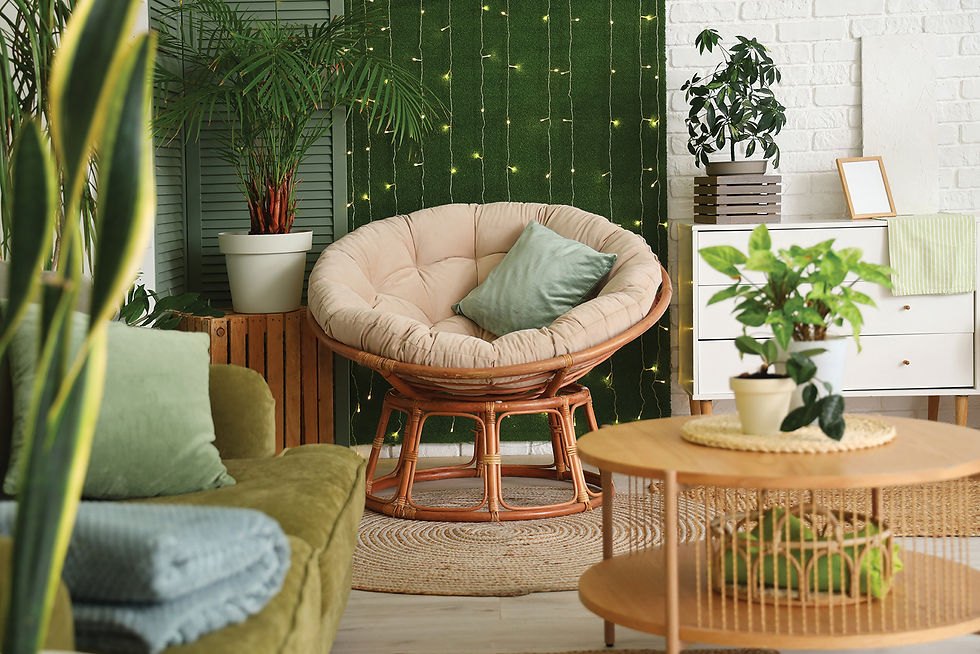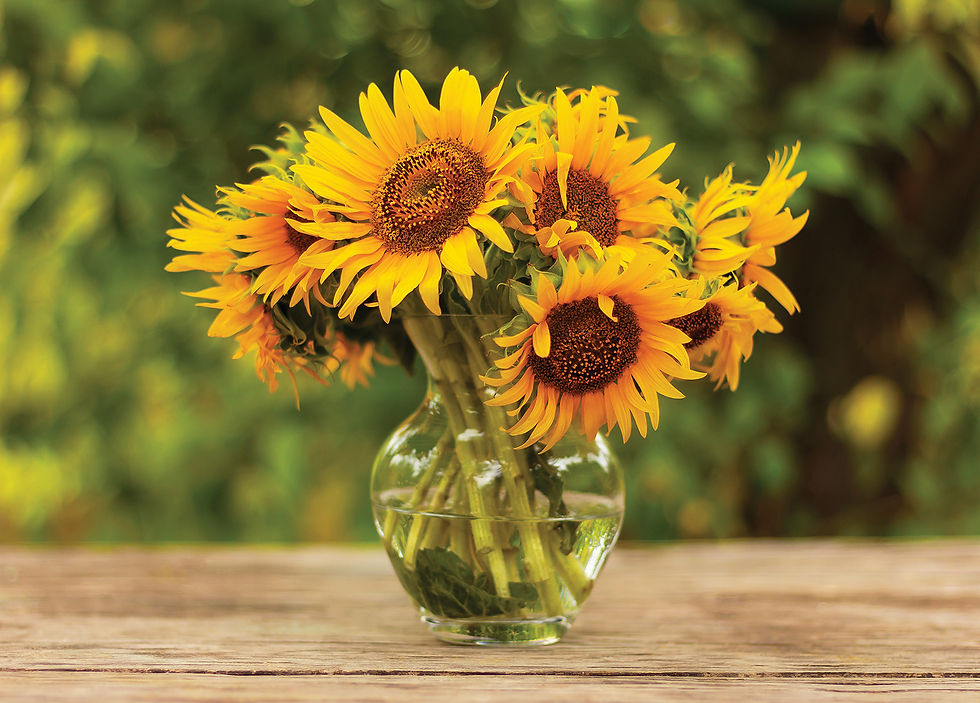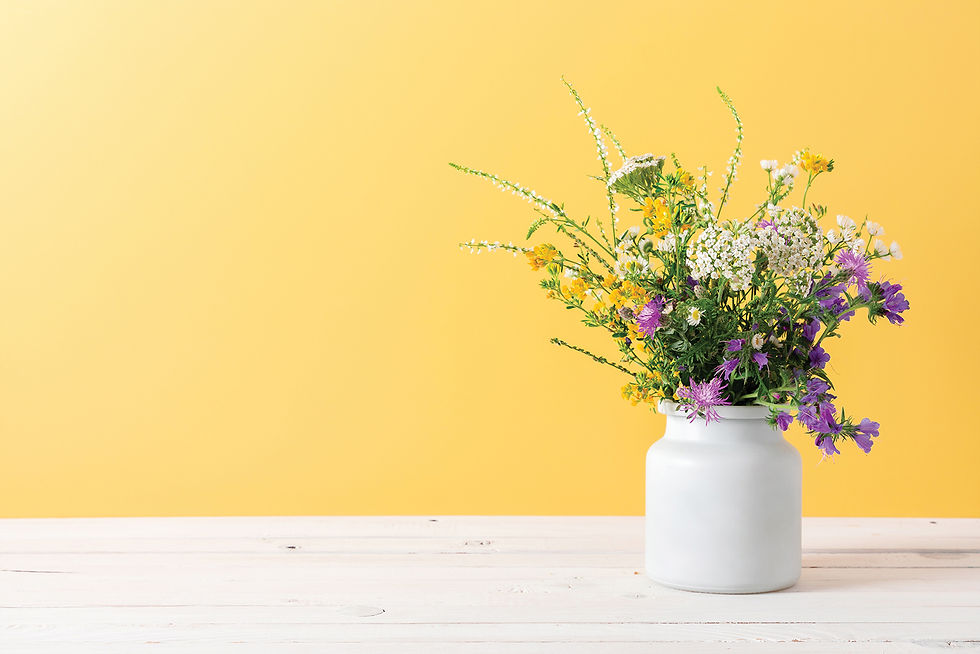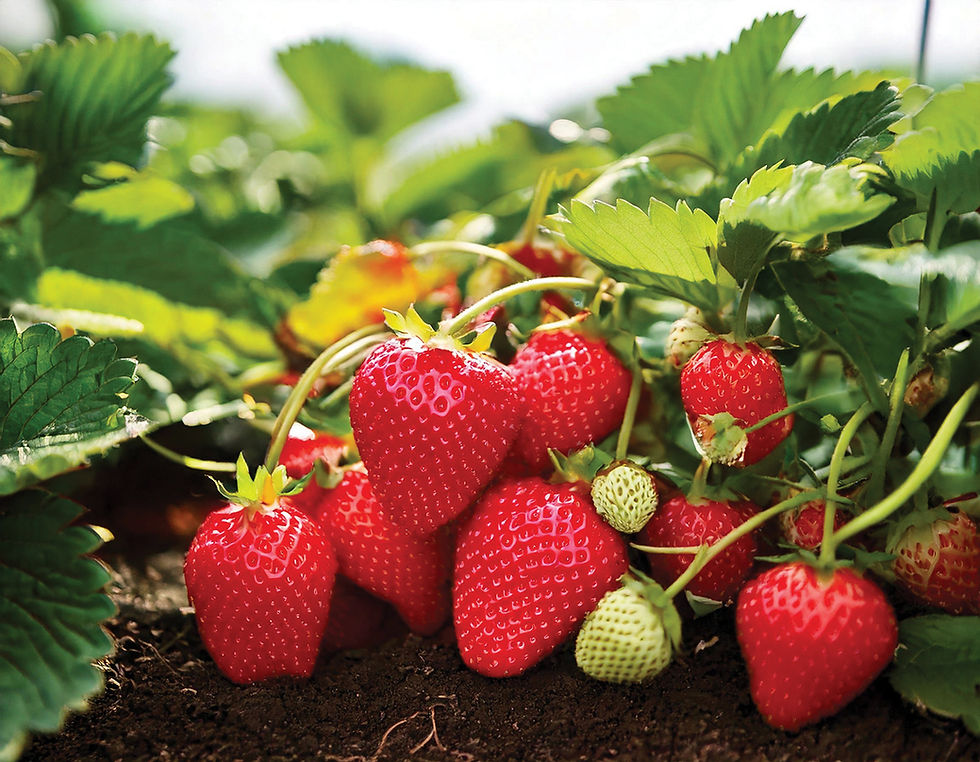Homes Extra: Home Grown
- Sara Whatley
- Aug 4
- 3 min read

Natural mood boosters, air purifiers, endless decorative potential... it’s easy to fill your home with colour, texture and interest when you bring in houseplants and flowers, says Sara Whatley
It’s fun to play with crossing the boundaries between inside and out, and what easier way to do this than to fill your home with plants and flowers.
House plants lend a particularly welcoming element to our environment, speaking of our connection with nature, their healing properties andan unparalleled calming aesthetic quality.
Cut flowers are instantly gratifying and endlessly changeable, allowing for a carousel of colour schemes and styles to enhance your home. And, you don’t have to be green fingered to make a vase of flowers look beautiful.
So, let’s take a closer look at the joys of filling our homes with the natural beauty of flowers and house plants.

Houseplants make us feel – they fill our spaces with meaning and life. Often given as a gift, perhaps a houseplant has been passed down to you, or you’ve been presented with a cutting taken from a prized specimen. It creates a special affection to remember the story behind a cherished plant when you come to water and tend to it, or simply walk past it and brush against the leaves.
We are inclined to grow very fond of our plants and nurture them with love and care, and in turn they nurture us. They can boost our mood and reduce stress, and tending to them gives a sense of satisfaction and purpose. Houseplants are also known to help improve air quality in the home by filtering out some pollutants and toxins.
Houseplants have filled our abodes for thousands of years, ancient Greek and Egyptian homes valued them, not only for their decorative and medicinal qualities, but also to symbolise wealthand status. The Victorians went frantic over ferns and even had a ‘fern madness’ called Pteridomania. Early terrariums, or Wardian cases, made transporting and importing exotic ferns and plants easier by provided ideal growing conditions for the delicate foliage.

By the 1960s houseplants like the popular Swiss Cheese Plant (Monstera deliciosa), snake plant, and begonia would be found alongside the newly purchased television. Although preferences for plant varieties change over time, houseplants have never ceased to hold a special place in our hearts, and homes.
Houseplants can be used as an interior design feature, they add colour, texture and impact. Want to create a dramatic focal point to a room? Try a fiddle-leaf fig or a rubber plant, both with broad glossy leaves and the ability to grow up to the ceiling. Or soften harsh edges by bringing a softer, organic feel to a space. Simply layer up different textured plants, include some trailing or hanging specimens for variety.

Now, back to floral displays and flower arrangements. It’s always marvellous to receive a big bouquet of striking blooms – it’s guaranteed to warm your heart and put a smile on our face. However, you can create a blooming marvellous display using flowers and foliage from your garden or wildflowers from your surrounding area. No need to make a formal arrangement, pop some stems loosely into a vase or jug to create a fresh and natural feel.
Ideal for a summer bbq or garden party, simply place on the table outside for a wild and natural display. Single stem flowers are very eye catching too, arranged in a dainty necked vase – simple, easy and no floristry skills needed!
One thing’s for sure, filling your home with plants and flowers will generate a natural harmony and bring life and joy to the environment.

Five Easy Care Houseplants
Parlour Palm – an easy-going plant happy in bright but indirect light. It’s low maintenance requiring regular watering when the top inch of soil dries out.
Snake Plant – the bold architectural semi-succulent Snake Plant is drought and shade resistant, making it easy to care for.
Spider Plant – notoriously hard to kill, Spider Plants are not fussy about their location if they get watered reasonably regularly. They like producing babies, which can be potted up to create new plants.
Peace Lily – The Peace Lily prefers bright, indirect light to produce a plethora of flowers. Keep soil moist but not waterlogged and beware
– she is a drama queen and droops theatrically when she needs watering.
Yucca – tropical, decorative and adaptable, a Yucca is a super additionto your easy to care for plants with little water required and adaptable to various indoor temperatures.








Comments